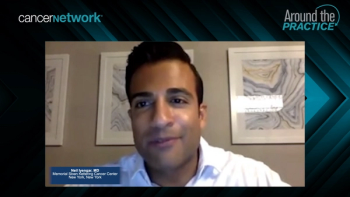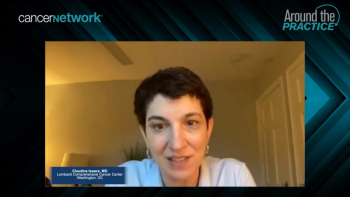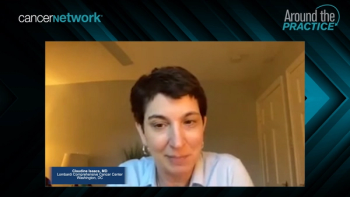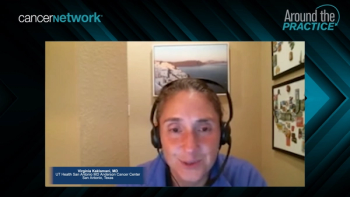
Virginia G. Kaklamani, MD, DSc
Articles by Virginia G. Kaklamani, MD, DSc


Neil Iyengar, MD; Claudine Isaacs, MD; Virginia Kaklamani, MD; and Vijayakrishna Gadi, MD, PhD, share clinical pearls for the evolving treatment landscape of HER+ metastatic breast cancer.

Vijayakrishna Gadi, MD, PhD, presents the case of a 63-year-old woman with grade 3 HER+/HR- metastatic breast cancer.

Breast cancer experts discuss the importance of patient quality of life when considering treatment recommendations for HER2+ breast cancer.

Claudine Isaacs, MD, comments on the follow-up and monitoring for a patient similar to the case presentation with HER2+ breast cancer.

Experts in breast cancer discuss the management of visceral metastases in HER2+ breast cancer, and Vijayakrishna Gadi, MD, PhD, presents the case of a 50-year-old woman with HER+/HR- breast cancer.

Vijayakrishna Gadi, MD, PhD; Claudine Isaacs, MD; Virginia Kaklamani, MD; and Neil Iyengar, MD, share their approach to treating patients with HER+ breast cancer who have brain metastases.

Breast cancer experts review unmet needs in the management of HER2+ metastatic breast cancer and updates from the 2021 ASCO virtual meeting.

Neil Iyengar, MD, leads the discussion on the current standard of care and the sequencing of therapy for HER2+ metastatic breast cancer.

This interview provides perspective on developments in breast cancer treatment in 2017, as well as a preview of what we can expect to change in the treatment of breast cancer in 2018.

The use of adjuvant endocrinetherapy in early-stage breastcancer is thought to eradicatemicrometastatic disease that may leadto systemic recurrences. Until relativelyrecently, the standard adjuvantendocrine therapy option was tamoxifen.Data from the Early Breast CancerTrialists’ Collaborative Group(EBCTCG) overview analysis reporteda 50% reduction in the risk of relapseand a 28% reduction in the riskof death in estrogen receptor (ER)-positive patients treated with 5 yearsof tamoxifen.[1] This benefit was observedregardless of menopausal orlymph node status and whether or notpatients were receiving chemotherapy.There was no such benefit documentedin ER-negative cancersreceiving tamoxifen. Tamoxifen hasalso been associated with a 47% reductionin the risk of developing contralateralbreast cancer.[1]

The use of aromatase inhibitorshas increased dramatically inthe past few years as a resultof the emergence of new, more specificagents, such as anastrozole(Arimidex), exemestane (Aromasin),and letrozole (Femara). This class ofagents effectively blocks the peripheralformation of estradiol, decreasingits concentration to less than 10%,while maintaining selectivity.[1]Evaluation of these selective aromataseinhibitors as adjuvant therapyfor early-stage breast cancer wasbased on the findings of trials inmetastatic breast cancer, summarizedby Visvanathan and Davidson, thatdemonstrated the equivalence and,in some cases, superiority of thearomatase inhibitors comparedwith megestrol and tamoxifen,including their superior side-effectprofile.[2-4]
Latest Updated Articles
 Commentary (Kaklamani/O’Regan): Aromatase Inhibitors as Adjuvant Therapy in Breast Cancer
Commentary (Kaklamani/O’Regan): Aromatase Inhibitors as Adjuvant Therapy in Breast CancerPublished: March 1st 2003 | Updated:
 Commentary (Kaklamani/Gradishar): Adjuvant Hormonal Therapy in Early Breast Cancer
Commentary (Kaklamani/Gradishar): Adjuvant Hormonal Therapy in Early Breast CancerPublished: October 1st 2005 | Updated:
 Developments in Breast Cancer 2017–2018: New Drugs, New Drug Classes-and the Prospect of More to Come
Developments in Breast Cancer 2017–2018: New Drugs, New Drug Classes-and the Prospect of More to ComePublished: December 15th 2017 | Updated:
